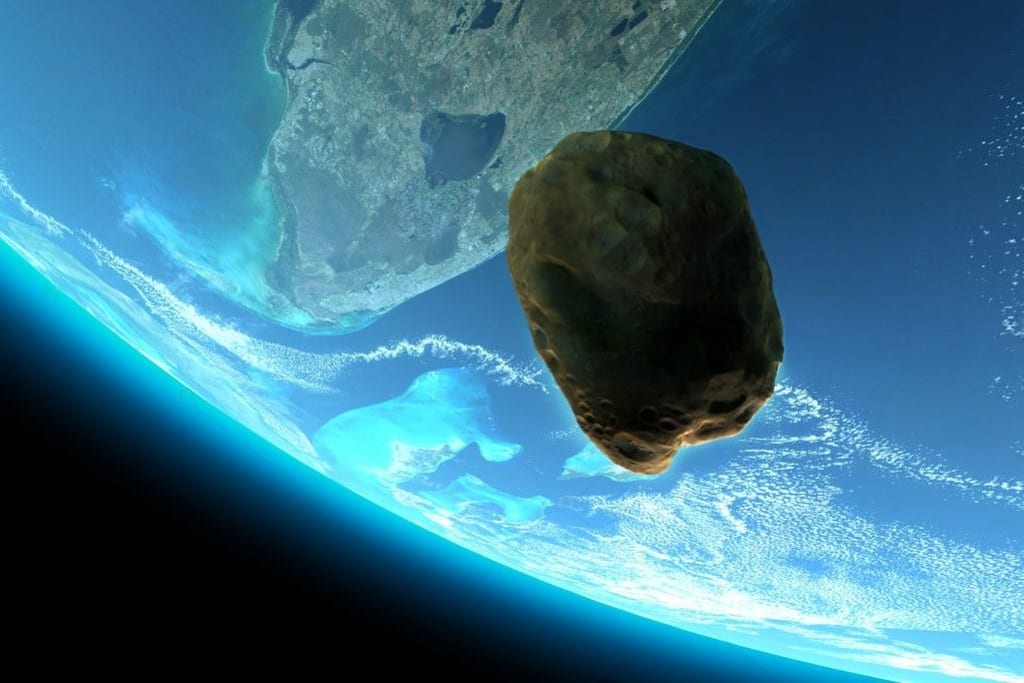
Introduction:
The universe is full of wonders, and sometimes, some of these wonders can pose a potential threat to our planet. Asteroids, for instance, are rocky bodies that orbit the sun and can sometimes collide with Earth. One such asteroid is 2011 AG 5, which was discovered in 2011 and caused quite a stir among astronomers. In this article, we will explore what 2011 AG 5 is, its characteristics, and what its potential impact on Earth would be. We will also discuss how astronomers monitor near-Earth objects and what they are doing to protect our planet from potential asteroid impacts.
2011 AG 5 is an asteroid that orbits the Sun and was first discovered in 2011. It has a diameter of approximately 140 meters and is classified as a potentially hazardous object, although it is currently not expected to impact Earth in the near future.
Characteristics of 2011 AG 52011 AG 5 is a near-Earth asteroid that was first discovered in 2011 by the Mount Lemmon Survey in Arizona, United States. The asteroid is part of the Apollo group of asteroids, which cross Earth's orbit as they travel around the sun.
The orbit and trajectory of 2011 AG 5 are closely monitored by astronomers because of its potential threat to Earth. Its orbit is elliptical and it has a close approach to Earth every 6 years, which increases the risk of a collision. In fact, in 2028, 2011 AG 5 will pass within 0.02 astronomical units (AU) of Earth, which is approximately 3 million kilometers away.
The estimated size of 2011 AG 5 is around 140 meters in diameter, making it large enough to cause significant damage if it were to collide with Earth. The composition of 2011 AG 5 is not well-known, but scientists believe that it may be a stony or stony-iron asteroid, which are common types of asteroids.
The characteristics of 2011 AG 5, such as its shape, surface features, reflectivity, and rotation, are also of interest to astronomers. These characteristics can provide important information about the asteroid's composition, structure, and behavior, which can be used to better understand its potential impact on Earth and develop strategies to prevent a collision.
Overall, 2011 AG 5 is an important object of study for astronomers and planetary defense experts. Through ongoing monitoring and research, we can continue to learn more about this near-Earth asteroid and take steps to protect our planet from potential impacts.
Monitoring near-Earth objects 2011 AG 5 is an asteroid that was discovered in 2011. It has a roughly spherical shape and its surface features are not well known. The asteroid has a diameter of about 140 meters and a mass of around 50,000 metric tons.
The reflectivity of 2011 AG 5 is not well determined, but its albedo, which is a measure of how much sunlight is reflected by the asteroid's surface, is estimated to be around 0.3. This means that the asteroid reflects about 30% of the sunlight that hits it.
The rotation and spin of 2011 AG 5 have been studied using radar observations, which suggest that it completes one rotation about its axis every 4.1 hours. The asteroid's spin axis is not well determined, but it is thought to be roughly perpendicular to its orbit.
There is currently no known potential impact of 2011 AG 5 on Earth. The asteroid's orbit has been well studied and it is not expected to come close to Earth in the foreseeable future. However, scientists continue to monitor the asteroid's orbit and trajectory to ensure that any potential future threats can be identified and mitigated.
Protecting Earth from asteroid impacts Astronomers detect and track near-Earth objects (NEOs) using a variety of tools and techniques. The primary method is through telescopic observations of the night sky, which can detect the faint light emitted or reflected by these objects. Other methods include radar observations and space-based telescopes.
One important tool used to monitor NEOs is the Pan-STARRS survey, which uses a network of telescopes to search for potentially hazardous objects. The Catalina Sky Survey, the Mount Lemmon Survey, and the NEOWISE mission are other programs that monitor NEOs.
The tracking of NEOs involves monitoring their orbits and trajectories to determine if they pose a potential threat to Earth. This is done through a combination of telescopic observations, radar measurements, and computer simulations. Scientists can then use this information to predict the future path of the NEO and assess its likelihood of impacting Earth.
However, current NEO monitoring systems have limitations. For example, small NEOs may be difficult to detect until they are very close to Earth, leaving little time to prepare for a potential impact. Additionally, the sheer number of NEOs and the vastness of space make it challenging to detect and track every object that may pose a threat.
To protect Earth from asteroid impacts, scientists are working on developing methods to deflect or destroy potential impactors. Some proposed methods include using nuclear explosives, kinetic impactors, or gravity tractors. However, these methods are still largely theoretical and would require further research and development to become viable options. Additionally, the development and deployment of such methods would require significant international cooperation and funding.
Asteroid deflection involves changing the trajectory of an incoming asteroid to prevent it from colliding with Earth. This can be done through methods such as gravity tractors, kinetic impactors, and nuclear explosions.
Asteroid destruction involves breaking up an incoming asteroid into smaller pieces that will burn up in the Earth's atmosphere or will cause less damage if they do hit the surface. This can be done through methods such as nuclear explosions, lasers, and kinetic impactors.
International organizations are collaborating to prevent asteroid impacts through programs such as the United Nations Committee on the Peaceful Uses of Outer Space (COPUOS) and the International Asteroid Warning Network (IAWN). These organizations facilitate cooperation among countries and scientific institutions to monitor and track asteroids and to develop strategies for preventing impacts.
However, there are several challenges and limitations to preventing asteroid impacts. First, detecting all NEOs that pose a threat to Earth is difficult, particularly those that are small or dark. Second, even if a NEO is detected, there may not be enough time to mount an effective deflection or destruction mission. Finally, there are logistical and technical challenges to developing and deploying the necessary technology to prevent asteroid impacts, particularly when it comes to nuclear explosions or other methods that require significant resources and international cooperation.
Bullet points:
- 2011 AG 5 is a near-Earth asteroid that was discovered in 2011
- It has an estimated diameter of 140 meters
- If 2011 AG 5 were to hit Earth, it would release an energy equivalent to 100 megatons of TNT
- Astronomers use telescopes and radar to detect and track near-Earth objects
- There are over 20,000 near-Earth objects that have been discovered so far
- The Planetary Defense Coordination Office is responsible for coordinating efforts to prevent asteroid impacts
- Strategies for preventing asteroid impacts include deflection and disruption
FAQs:
Q. What is the probability of 2011 AG 5 hitting Earth?
A. According to current estimates, there is a 1 in 625 chance that 2011 AG 5 will collide with Earth in the year 2040.
Q. Can we prevent an asteroid impact?
A. Yes, there are several strategies that can be used to prevent asteroid impacts, including deflection and disruption.
Q. How long do we have to prepare for a potential asteroid impact?
A. It depends on the size and trajectory of the asteroid. For larger asteroids, we may have decades of warning, while smaller asteroids may only be detected a few days before impact.
Conclusion:
Asteroids are a fascinating and potentially dangerous aspect of our universe. While the chances of an asteroid collision with Earth are relatively low, the potential consequences are significant. 2011 AG 5 is just one example of the many near-Earth objects that astronomers are monitoring and to better understand the risks and develop strategies to prevent potential impacts.
Through ongoing monitoring and research, astronomers are gaining valuable insights into the nature and behavior of near-Earth objects like 2011 AG 5. By working together, international organizations and governments can continue to develop and implement strategies to protect our planet from the potential dangers of asteroid impacts.
As we continue to explore and study the wonders of the universe, it is important that we also take steps to ensure the safety and security of our planet. By staying informed and supporting efforts to monitor and prevent asteroid impacts, we can help protect our planet and ensure a brighter future for generations to come.
About the Creator
krish
Freelance writer and blogger sharing meaningful stories about universe, nature and humanity. Daring to know more, exploring and sharing insights on a journey of discovery. Join me in this never-ending quest for knowledge.






Comments
There are no comments for this story
Be the first to respond and start the conversation.